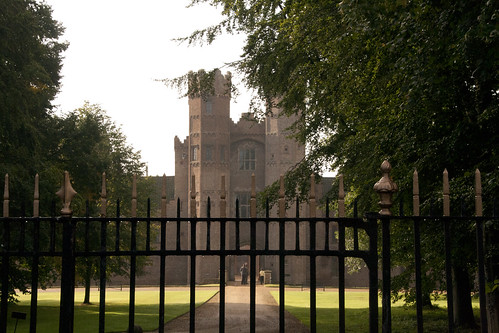
The results of the Protestant Revolt are all about us on the pilgrimage to Walsingham. We walk from the impressive and uncorrupt hand of the great Abbess St Ethelburga (d. 664) in Ely to the site of the replica Holy House built in Walsingham as a result of Lady Richeldis' vision in 1061. Catholicism had no shallow roots in East Anglia, and some of the most impressive late Medieval churches, with intact Rood Screens, are to be found in Norfolk. We stopped to pray at the ruins of the Augustinian Priory of St Mary and All Saints at East Acre, surrendered to the King 1538: the first monastic 'surrender'. It was founded in the reign of William II (i.e. late 12th Century).
The highlight of the second day's walk, however, relates more to the Catholic response to the Reformation, the wonderful, moated, Oxburgh Hall.

The Bedingfeld family always kept the Faith, and hung washing out on the garden hedges to indicate a priest was about to say Mass in the house. When it was safe to do so, they built a free-standing chapel, in the Gothic style, in the grounds, and it is there we had Mass. It has a wonderful Altarpiece, of 16th Century German workmanship.
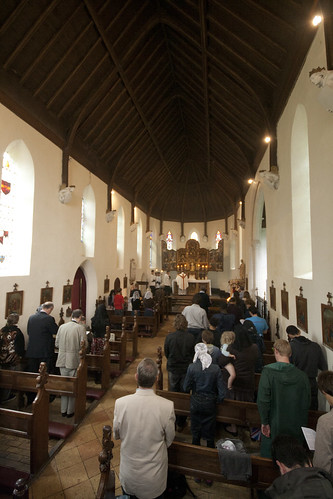
After Mass the Bedingfelds gave us tea and coffee in their kitchen and allowed us to look at, and climb into, their priest hole. It is cleverly contrived under the gardrobe (the loo) next to a bedroom. Once you get in there is space for three people and more, with alcoves where you could put objects needing to be hidden or food. It is quite tricky to get in and out.
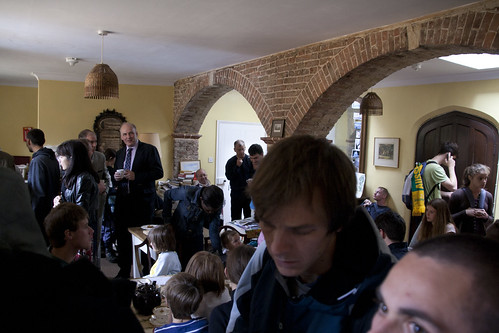

From the outside, looking in.
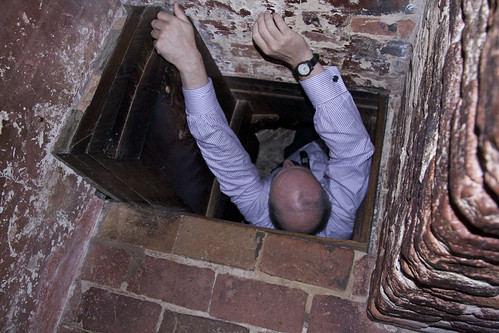
A visitor climbing out.
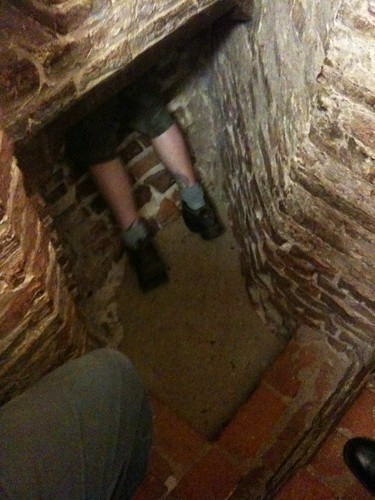
View from the inside, someone (with tatoos on his ankles - who can it be?) climbing in.
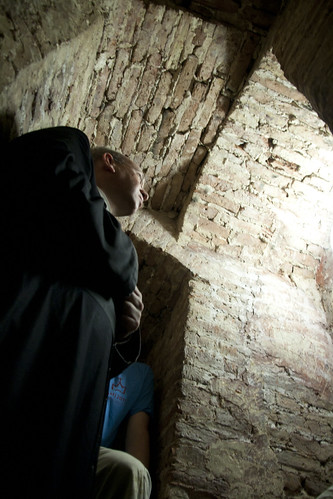
Here's the hole with a priest in it - our chaplain, Fr Bede Rowe.
It is difficult to give an impression of it with a camera, but after squeezing under the loo and round a bend you emerge into an open space. Records of who used it, and with what success, were not, for obvious reason, kept, but no priest appears to have been captured at Oxburgh, so we may assume that the priest hole served its purpose well. The identity of the builder again cannot be established with certainty but the greatest priest-hole maker was the heroic Jesuit lay brother and martyr, St Nicholas Owen, who was born in Oxford a stone's throw from the Castle, and was tortured to death in the Tower of London in 1606. St Nicholas took his secrets with him to the grave, and priest holes are still found in Catholic houses to this day, where they had been forgotten about for centuries. Owen did all his work alone, often under cover of darkness, and was clearly a brilliant workman.
We are very grateful to Henry and Mary Bedingfeld for their kindness and hospitality. The house, which is owned by the National Trust (with the Bedingfelds living in part of it) is open to the public, and is well worth a visit.
No comments:
Post a Comment